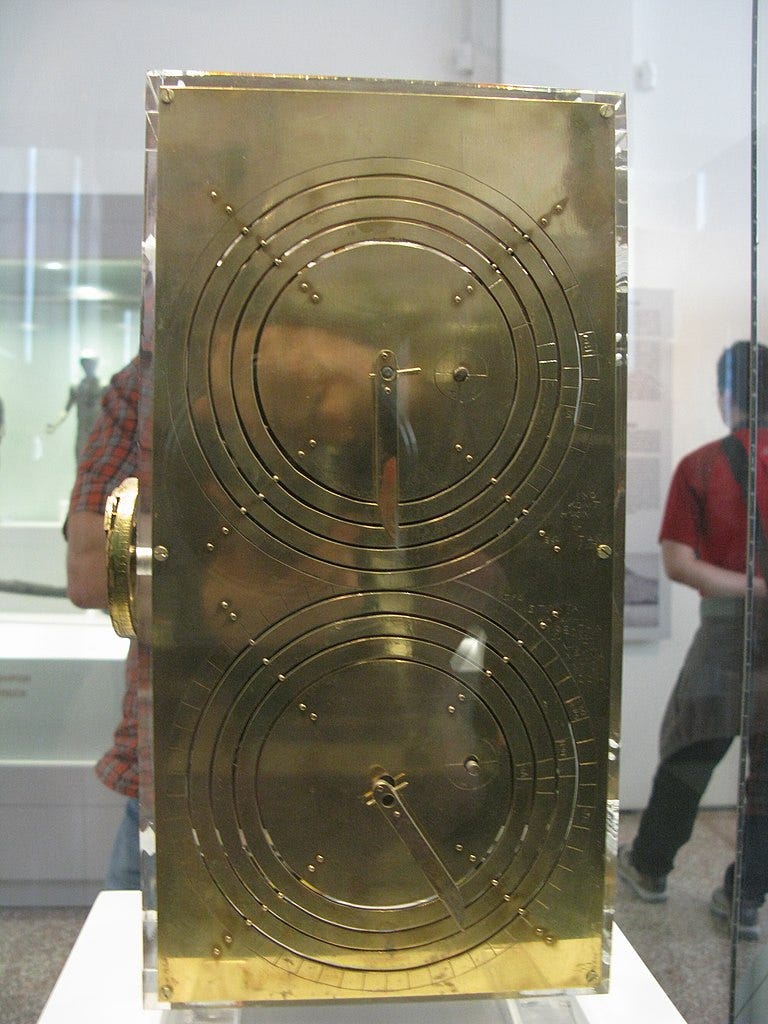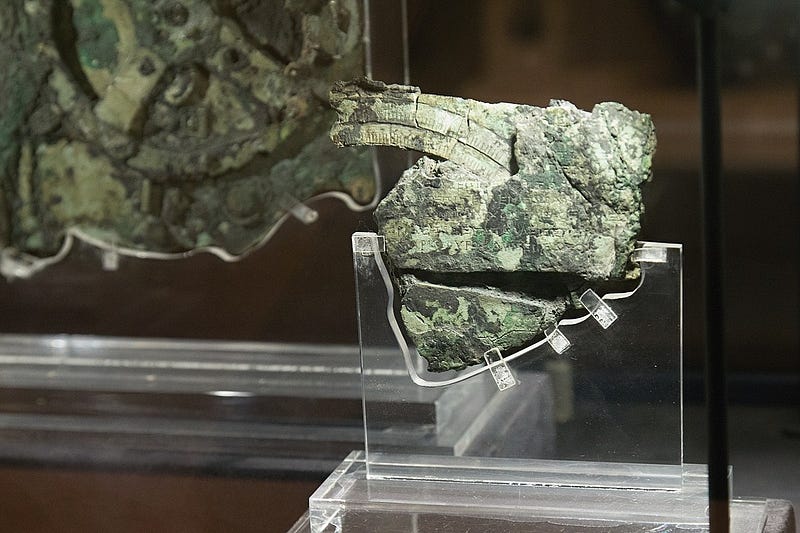Unraveling the Mysteries of the Antikythera Mechanism
Written on
Chapter 1: The Antikythera Mechanism Unveiled
The ancient device known as the Antikythera Mechanism is often referred to as the first computer. But have we truly uncovered all its components? This remarkable artifact is to technology what the Acropolis is to architecture. Its origins and purpose remain some of the most intriguing questions in the realm of historical technology.

Over 2,000 years ago, a merchant ship encountered misfortune while navigating between Crete and Kithira, ultimately crashing into the cliffs of a small island now known as Antikythera. The ship sank, taking its cargo with it to a depth of about 50 meters.
In 1900, Greek sponge divers stumbled upon the wreckage and discovered a trove of artifacts, including bronzes, jewelry, and an object that appeared to be a corroded lump of bronze, roughly the size of a large dictionary. This remarkable find was ultimately taken to the National Archaeological Museum in Athens. Initially, the staff focused on more obvious treasures, neglecting the heavy bronze lump for two years until its significance was finally recognized.

In 1902, archaeologist Valerios Stais made a groundbreaking discovery when he identified that the damaged bronze block contained a large gear wheel, revealing it to be part of a more complex mechanism. Over the years, researchers have revealed some of the secrets of the Antikythera Mechanism, proving that ancient mechanical knowledge was far more advanced than previously thought. Today, it remains a subject of fascination, often dubbed the most enigmatic object in the history of technology.

Researchers have concluded that the Antikythera Mechanism was designed to calculate celestial positions, determine lunar phases, and predict eclipses. However, its dating posed significant challenges. Created around 200–100 BC, it bore no resemblance to any known devices from that time, leading to wild hypotheses, including the notion that a medieval clock had somehow ended up on the ancient ship.
“It’s more complex than any device that was built in the next 1,000 years,” states Professor Mike Edmunds of Cardiff University, who leads the Antikythera Mechanism Research Project.
By the 1950s, Yale professor Derek de Solla Price dedicated two decades to studying the Mechanism, employing X-ray technology. A digital reconstruction was completed in 2006, and by 2016, a comprehensive study of its 82 parts and over 3,000 Greek inscriptions was published.

The Mechanism comprises seven primary components and numerous smaller pieces, requiring over 30 gears for its operation. The largest gear, measuring 13 centimeters in diameter, originally had 223 teeth.
It featured two dials: the front dial displayed the movements of the Sun and Moon against the zodiac backdrop, while the rear dial predicted eclipses and showcased various astronomical cycles, including the 19-year Metonic cycle. It likely also indicated the positions of five known planets: Mercury, Venus, Mars, Jupiter, and Saturn. Additionally, it served as a calendar, allowing the user to determine the dates of upcoming Olympic Games.
Chapter 2: The Genius Behind the Mechanism
The individual who crafted this extraordinary device must have been a brilliant polymath, knowledgeable in astronomy, mechanics, and metallurgy. Candidates for its authorship include the renowned Archimedes and the astronomer Hipparchus, whose theories may have influenced the Mechanism's design. Some Greek researchers attribute its creation to the Pythagorean school, known for its contributions to mathematics and astronomy.
Secrets of the Mechanism of Antikythera
One enduring question is whether more devices like the Antikythera Mechanism exist, potentially waiting to be discovered. As of now, it remains unclear if all components have been retrieved from the seabed. In June 2022, divers found the head of a Hercules statue, part of a marble sculpture unearthed 123 years prior. They also uncovered unusual metal objects, leading to speculation—yet unconfirmed—that these could be additional parts of the Antikythera Mechanism.
In this video, titled "The Antikythera Mechanism: An Astonishing Invention from Ancient Greece | The 1st Analogue Computer," viewers will delve into the intricacies of this ancient device and its significance in the history of technology.
The second video, "Secrets of the Antikythera Mechanism: Session 1," explores the ongoing research and discoveries surrounding this fascinating artifact.

Thank you for engaging with this exploration! If you found this content valuable, consider supporting my work through a clap, donation, or tip. Your generosity enables me to continue creating insightful material.
